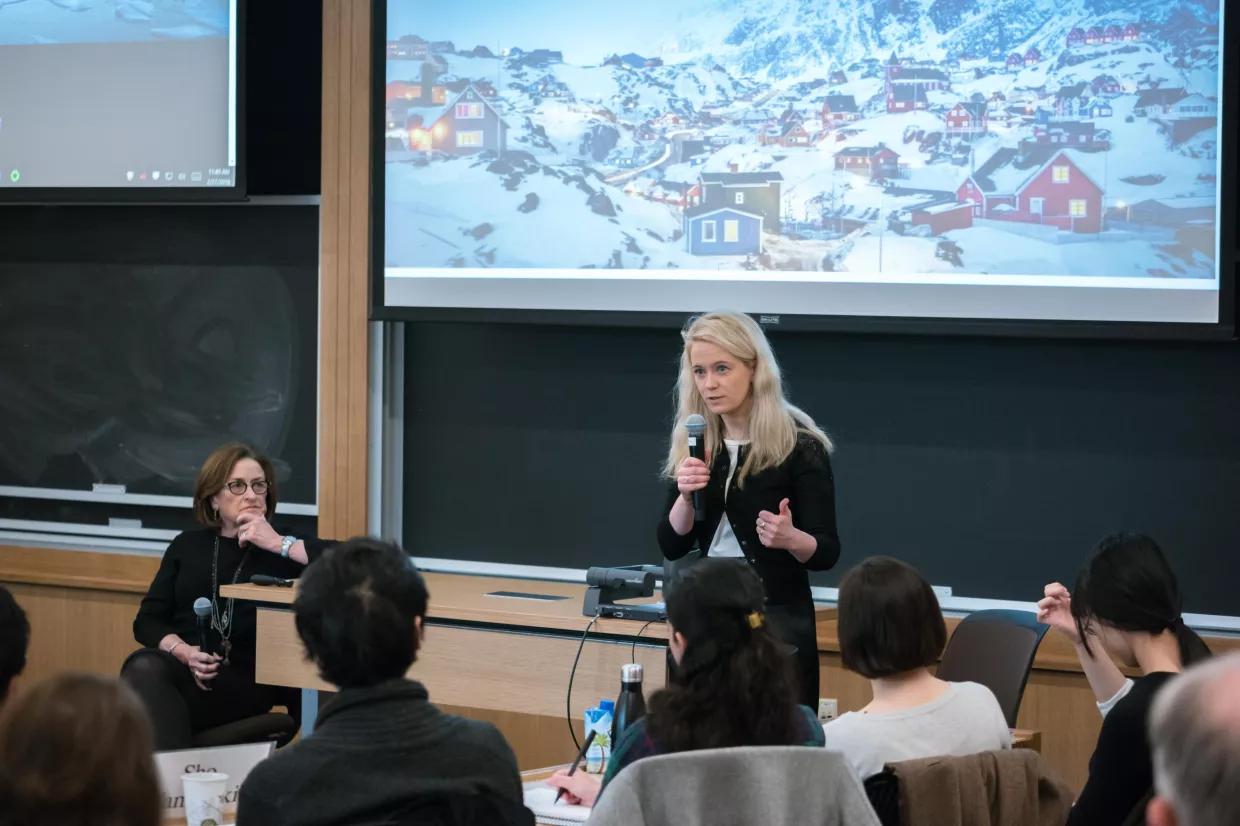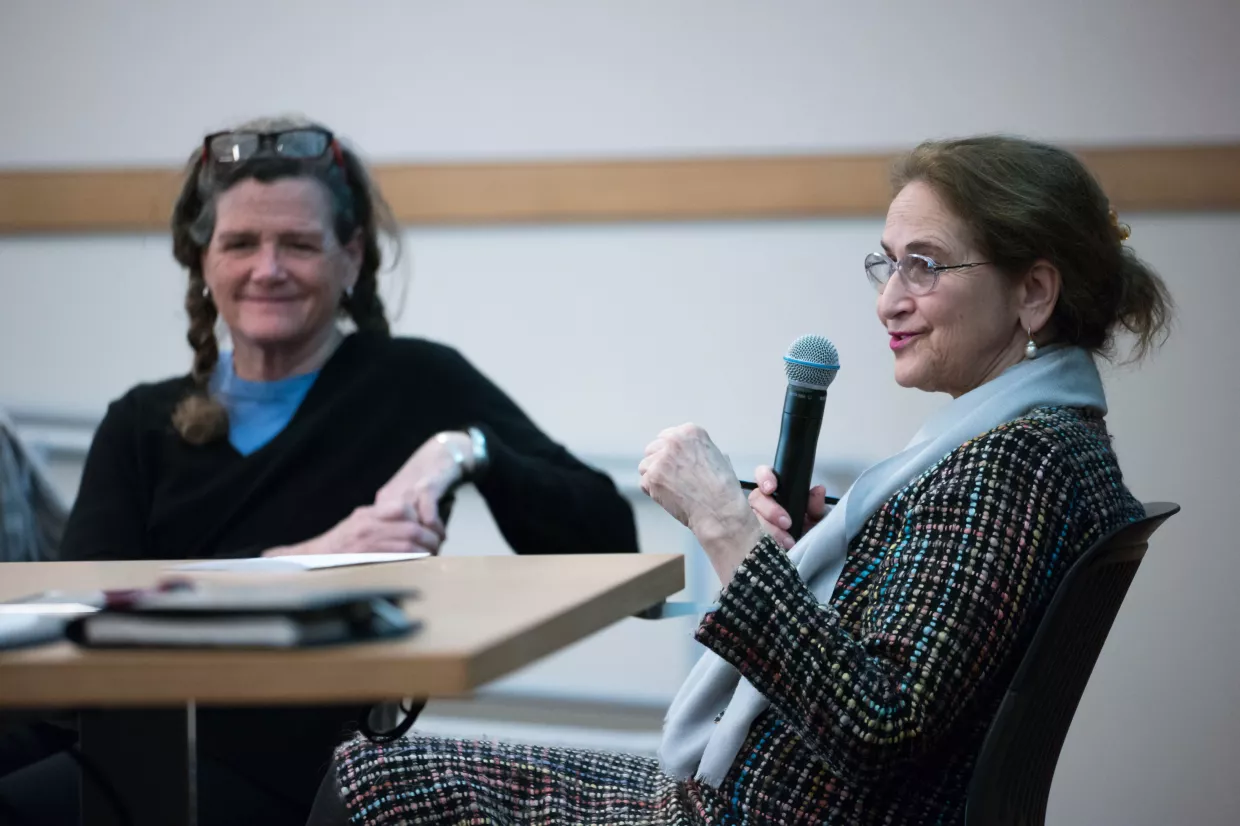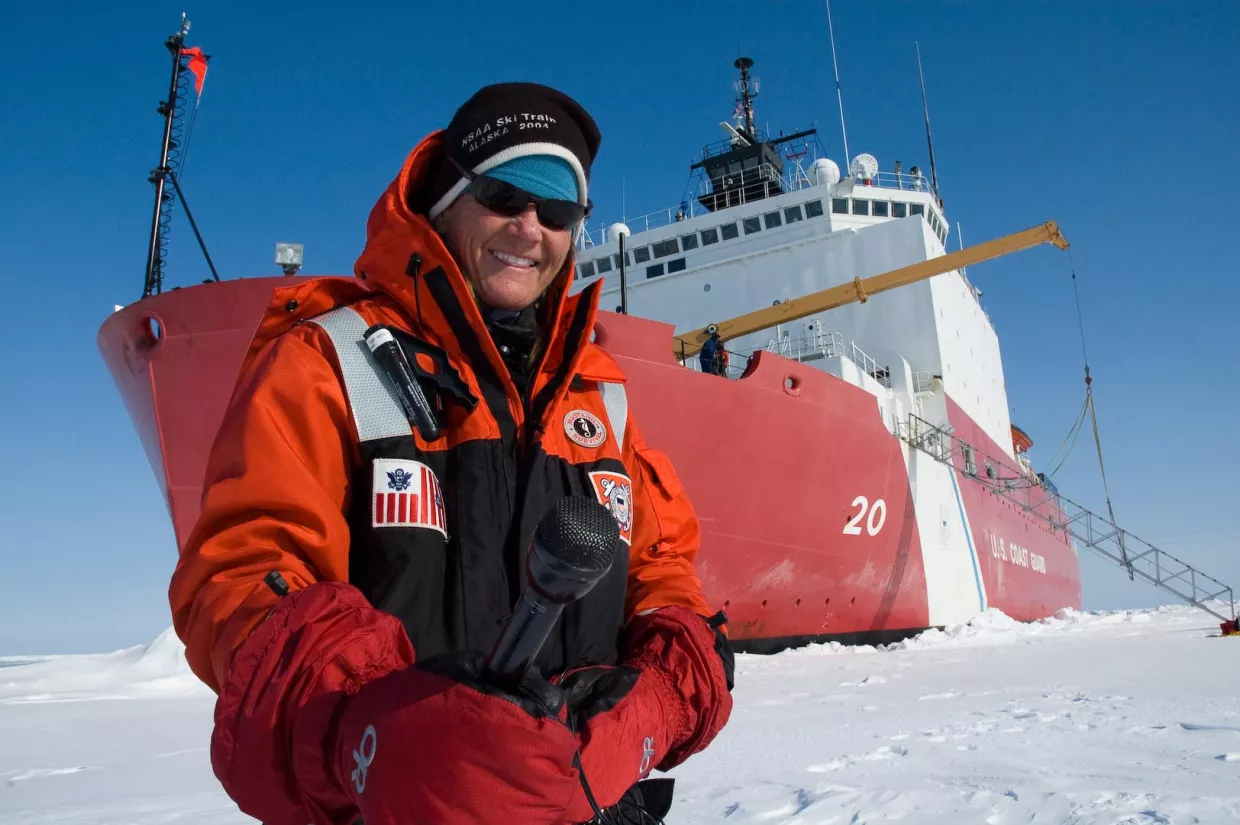The Arctic region is growing rapidly in global prominence, due in large part to the environmental changes caused by global warming. Rising temperatures and the receding sea ice reveal untapped natural resources and lucrative new trade routes. Non-Arctic nations, including China and India, are joining in the discourse on the region as new economic opportunities open up. Meanwhile, the four million human residents of the land north of the Arctic circle, many of them Indigenous peoples, are facing the reality of dramatically changing life because of human-caused climate change and an uncertain future.
However, in the public mind, the words ‘Arctic issues’ continue to conjure images of melting polar ice caps and slowly dying polar bears. While the plight of Arctic wildlife has proven consistently able to capture global media attention, the practice of serious reporting on the region’s other issues remains in its infancy. Environmental, political, and human stories are waiting to be told, yet the narrative in mainstream media remains one-dimensional, nebulous, and pessimistic.
To address this inaccurate portrayal and discuss possible solutions, Cristine Russell, a Senior Fellow at the Belfer Center’s Environment and Natural Resources Program (ENRP), invited Arctic and media experts Elizabeth Arnold and Alice Rogoff to speak with students and the public about how to bring the right kind of public attention to the Arctic.
Former NPR journalist Arnold, an Alaska resident and a Spring 2018 Joan Shorenstein fellow at the Kennedy School’s Shorenstein Center on Media, Politics and Public Policy, is focused on new ways to tell the human stories of those who live above the Arctic Circle. She developed a website, Arctic Profiles, to share their stories. Before moving to Alaska she reported on Congress, the White House, and the American West for NPR and PBS for 20 years and has received numerous awards, including a duPont Columbia Silver Baton and the Dirksen Award for Distinguished Reporting on Congress.
Alice Rogoff, also an Alaska resident, is the Publisher and Editorial Director of the new website Arctic Today and the former Publisher and owner of Alaska Dispatch News. Together with former Iceland President Ólafur Ragnar Grímsson, she is co-founder of the the Arctic Circle organization, the largest international gathering on Arctic issues. Rogoff also worked in media as CFO of U.S. News and World Report for over a decade and earlier at the Washington Post.

Both Arnold and Rogoff seek to provide the public with a broader and deeper Arctic narrative than the major international media outlets offer. The narrative thus far has been one of, as Arnold aptly puts it, “doom and gloom” rather than of potential solutions to deal with the rapidly changing Arctic environment. The reality in the Arctic, however, is nuanced and dynamic, encompassing a profusion of diverse forces working with and against one another to shape the future of the region. “People who live in the Arctic, be they Indigenous people or interlopers like me and Elizabeth, we all find ways to adapt,” Rogoff summarizes.
The panel was sponsored by Belfer’s ENRP and the Arctic Initiative. Halla Hrund Logadóttir, co-founder of the Arctic Initiative, provided an overview of the Initiative’s Arctic Innovators Program. The goal is to generate policy solutions by having students propose and develop ideas to tackle some of the challenges facing the region. “It’s a program where you combine social innovation with the policy challenges in the Arctic region,” Logadóttir explains.
Beyond Puffins and Polar Bears
“The two times I went to the North Pole were separated by 10 years, and the change was absolutely profound,” Arnold recalls. Receding sea ice, shifting tidelines, and a less predictable climate contribute to the changes that the region has been undergoing. This generated a dynamic set of conditions in which entire communities have been forced to consider resettlement in the face of rising water levels and melting permafrost.
Rising temperatures have already begun to open the doors to industry and trade. The United States Geological Survey estimates that the Arctic contains 13% of the world's undiscovered conventional oil resources and 30% of its undiscovered conventional natural gas resources, despite occupying a mere 6% of its surface area. State and private energy firms seek to invest in the development of extraction and transportation infrastructure, while environmental groups strive to prevent what they see as unreasonable level of risk. Energy is by far the largest economic sector in the region, comprising approximately one-third of the Alaskan economy.

Receding ice is opening the door for new trade and shipping opportunities among Arctic and non-Arctic countries. In early 2018, China published white papers for a proposed ‘Polar Silk Road.’ Russia is working to develop maritime infrastructure along its northern coastline, opening new ports and continuing to develop its unique fleet of nuclear-powered icebreakers. The country claims considerable territory in the Arctic seafloor, with one of its explorers recently planting the country’s tricolor flag in the underwater ground of the North Pole.
With the increased economic potential, of course, comes security challenges, especially between the traditional rivals Russia and the U.S. Given the current geopolitical climate, this should come as no surprise, but Arnold and Rogoff both argue that competition is often overemphasized. “In the Arctic, we are partners with Russia,” Rogoff explains. With the limited resources, harsh conditions, and inhospitable terrain, cooperation is sometimes a must. This is especially true in the natural sciences, where U.S. and Russian research teams work together, in contrast to the global security rivalry. “This ‘back-door diplomacy’ across the Bering Sea has been critical over the years for scientists who study ice, walrus, polar bears, and snow geese for example, which pay no attention to borders,” says Arnold.
Indigenous populations struggle to keep their balance on the shifting ground that is the environmental, economic, military, and political landscape of the Arctic. “They are the least likely to contribute to climate change, and the most likely to be affected by it,” Arnold says. As a diverse group that is spread across Arctic nations, the Indigenous Arctic population has minimal political or economic capital.

The Arctic is more than melting ice and endangered wildlife, but this is not what what we would think based on coverage of most mainstream media. The typical narrative is bleak and one-dimensional, offering little hope for a better environmental future and placing Indigenous people in the role of “victims,” said Arnold. Arnold and Rogoff both see the traditional “doom and gloom” narrative reaching audiences outside the Arctic as insufficient to motivate global or individual action to reduce carbon emissions and climate change. “You can’t scare or depress people into changing their behavior,” Arnold added.
Escaping the Doom and Gloom
So how do we change the popular narrative? How can the conversation be shifted away from dying polar bears, suffering Indigenous peoples, and the rising tide? “For me, the answer is just do more journalism,” says Rogoff. The popular narrative won’t change until a more accurate and compelling view is presented to the public. Building this narrative will take the intelligence and dedication of young minds from across the globe going to the Arctic and getting involved. “The biggest resource deficiency [in the Arctic] is human capital,” Rogoff continues.
The way to add to a narrative is to tell more stories. To Rogoff, every person who engages with the Arctic has the potential to be a “miniature megaphone” - to propagate knowledge and thus cut through the doom-and-gloom to real understanding and engagement. As Arnold puts it “...despair actually leads to public disengagement. If we as journalists are really seeking the truth and reporting it, then we should not only be telling the story of villages in the Arctic eroding into the sea, but more comprehensive reporting that includes real and potential responses,” as well as solutions to the impact of climate change.
Notes
The Arctic media event was held on February 27, 2018, in conjunction with a Spring 1 Module taught by Russell: IGA451M, “Controversies in Climate, Energy & the Media.”
Arnold is finishing a Shorenstein Center research paper, tentatively titled Doom and Gloom: The Narrow Narrative in Climate Change Reporting, addressing many of these issues.
Edel-Hänni, Jonathan. “From Polar Bears to People: Getting the Arctic Climate Change Story Right.” Belfer Center for Science and International Affairs, May 3, 2018
